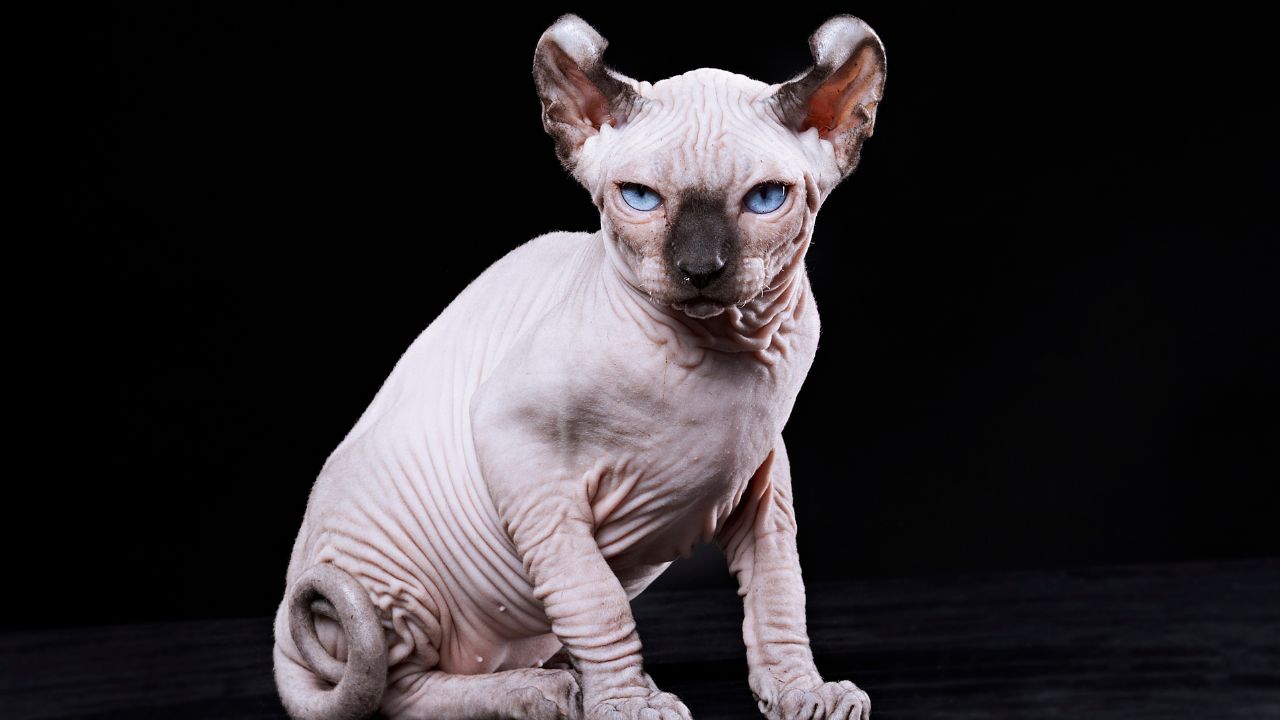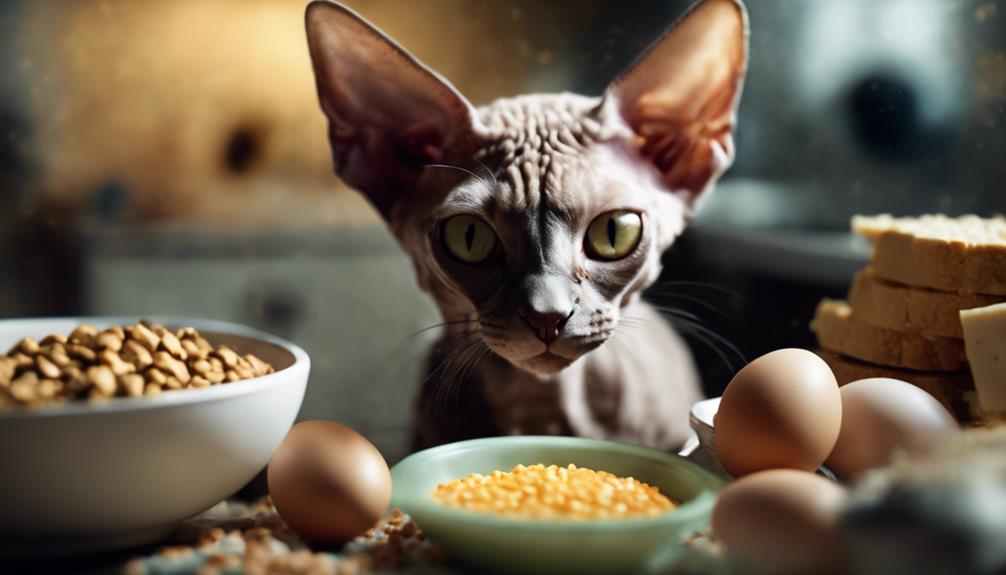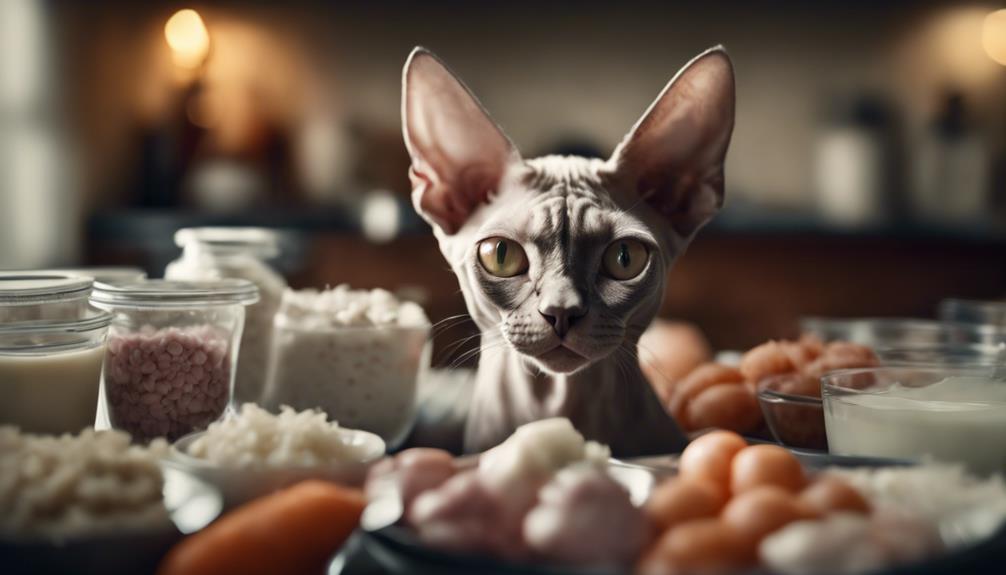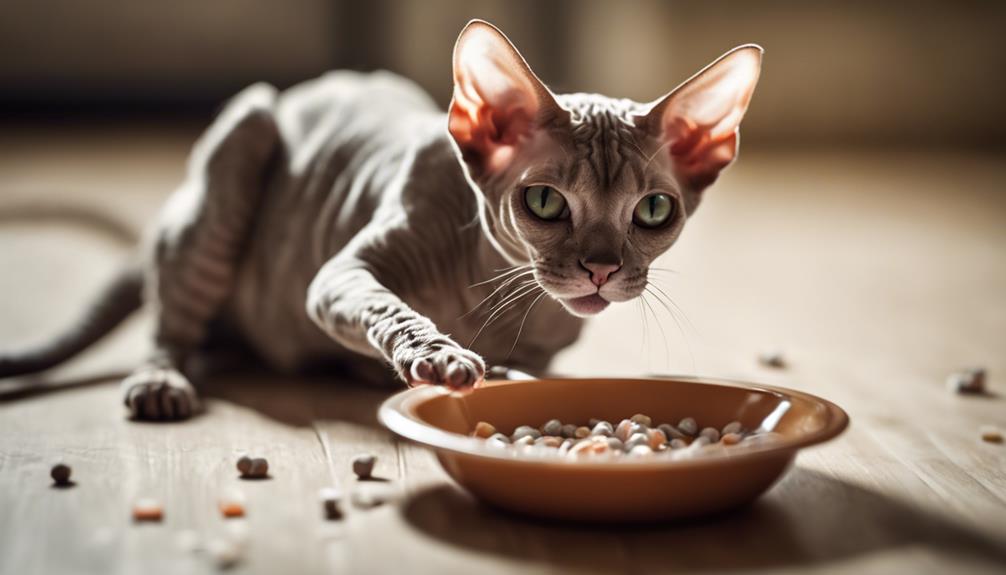The Sphynx cat is a unique breed known for its hairless appearance. Unlike other hairless cat breeds, such as the Peterbald or the Donskoy, the Sphynx cat is not completely bald. Instead, they have a fine layer of peach fuzz on their bodies, and some may have short, fine hair on their paws, outer edges of the ears, and tail. But why are Sphynx cats hairless in the first place?
Hairlessness in cats is a naturally occurring genetic mutation that can be either dominant or recessive. In the case of the Sphynx cat, it is a recessive mutation that was first documented in the 1960s. Breeders selectively bred hairless cats to create the Sphynx cat breed we know today. The Sphynx cat’s unique appearance and playful personality make them a popular choice among cat lovers, but their hairlessness requires special care and attention. In this article, we will explore why Sphynx cats are hairless, their history, and how to care for them.
History of Sphynx Cats
Sphynx cats are a unique breed known for their hairlessness. The breed originated in Canada in the 1960s through selective breeding of hairless cats produced by natural genetic mutations. In this section, we will explore the origin and development of the Sphynx breed.
Origin of Sphynx Cats
The first recorded appearance of a hairless kitten was in Toronto in 1966. A domestic cat gave birth to a hairless kitten, later discovered to be the result of a natural genetic mutation. The kitten was named “Prune” and began the first hairless cat breeding program.
In the 1970s, two more hairless kittens were discovered in Toronto, and the breeding program continued. The breed was originally called the Canadian Hairless but was later renamed the Sphynx.
Development of Sphynx Breed
The Sphynx breed was developed through selective breeding of hairless cats produced by natural genetic mutations. The breed was recognized by the Canadian Cat Association in 1971 and the Cat Fanciers’ Association (CFA) in 1979.
The breed was initially met with controversy due to concerns about their health and well-being. However, breeders worked to address these concerns and establish the breed as a healthy and viable option for cat lovers.
Today, the Sphynx breed is recognized by many organizations, including the CFA and The International Cat Association (TICA). The breed has also been used in breeding programs to create new hairless breeds, such as the Peterbald and Bambino.
In conclusion, the Sphynx breed has a fascinating history and has come a long way since its humble beginnings in Toronto. Today, these unique cats are beloved by many and continue to be a popular breed for cat lovers around the world.
Why Are Sphynx Cats Hairless?
Sphynx cats are one of the most unique and recognizable cat breeds, known for their hairless appearance. But have you ever wondered why they are hairless? In this section, we will explore the genetic mutation that causes hairlessness in Sphynx cats, as well as the benefits and drawbacks of being a hairless cat.
Genetic Mutation
The hairlessness of Sphynx cats is caused by a genetic mutation. Specifically, it is a mutation in the gene that codes for keratin, a protein that is a major component of hair and nails. This mutation causes the hair follicles to produce very fine, short hairs that do not grow long enough to cover the cat’s body. As a result, Sphynx cats are nearly hairless, with only a fine layer of downy fur on their skin.
Interestingly, the same gene that causes hairlessness in Sphynx cats is also responsible for the curly coat of Devon Rex cats. However, the mutation that causes hairlessness in Sphynx cats is recessive, meaning that both parents must carry the gene in order for their offspring to be hairless.
Hairlessness and Lack of Fur
One of the most obvious benefits of being a hairless cat is that Sphynx cats are often considered hypoallergenic. This is because the majority of cat allergies are caused by a protein found in cat saliva and skin cells, which is spread through the cat’s fur when they groom themselves. Since Sphynx cats have very little fur, they produce less of this protein and are less likely to trigger allergies in sensitive individuals.
However, being hairless also has its drawbacks. Sphynx cats are more sensitive to temperature changes than other cats, as they lack the insulating properties of fur. They are also more prone to skin infections and sunburn, as their skin is exposed to the elements. Regular bathing is necessary to keep their skin clean and healthy, and many Sphynx cats require a special cat shampoo to prevent dryness and irritation.
Conclusion
In conclusion, Sphynx cats are hairless due to a genetic mutation that affects the production of hair. While being hairless has its benefits, such as being hypoallergenic, it also comes with its own set of challenges. Sphynx cats require regular bathing and moisturizing, as well as protection from temperature changes and the sun. However, with proper care and attention, these unique and affectionate cats can thrive and make wonderful companions.
Personality and Characteristics of Sphynx Cats
Sphynx cats are known for their unique appearance, but they are also beloved for their friendly and playful personalities. In this section, we will explore some of the key characteristics of Sphynx cats.
Affectionate and Playful
Sphynx cats are incredibly affectionate and love to be around their owners. They are often described as “velcro cats” because they enjoy being close to their humans and will follow them around the house. They also love to play and are very active, so they make great companions for families with children or other pets.
Intelligent and Sociable
Sphynx cats are highly intelligent and can be trained to do a variety of tricks. They are also very sociable and enjoy being around people and other animals. They are not typically shy or aloof like some other cat breeds, and they will often greet visitors at the door.

Vocal and Communicative
Sphynx cats are known for their vocalizations and will often “talk” to their owners. They have a wide range of sounds, from chirps and meows to purrs and trills. They are also very communicative with their body language, using their tails, ears, and paws to express themselves.
Appetite and Grooming
Sphynx cats have a hearty appetite and require a balanced diet to maintain their health. They are also prone to ear infections, so it is important to clean their ears regularly. Despite their lack of fur, Sphynx cats still require grooming to keep their skin healthy and clean. They should be bathed regularly and may benefit from wearing cat apparel in cold weather.
Overall, Sphynx cats are friendly, intelligent, and sociable pets that make great indoor companions. With proper care and attention, they can live long and healthy lives.
Health Concerns for Sphynx Cats
Sphynx cats are unique and lovable pets, but they do require special care due to their hairless nature. In addition to their grooming needs, Sphynx cats are also prone to several health concerns that owners should be aware of.
Hypertrophic Cardiomyopathy
One of the most common health concerns for Sphynx cats is hypertrophic cardiomyopathy (HCM). This is a condition in which the heart muscle becomes abnormally thick, making it difficult for the heart to pump blood effectively. HCM is a genetic condition that can affect any breed of cat, but it is more common in Sphynx cats.
If your Sphynx cat is diagnosed with HCM, your veterinarian may recommend medications to help manage the condition. It is also important to monitor your cat’s weight and provide a healthy diet to help support heart health.
Ear Infections
Sphynx cats are also prone to ear infections due to their lack of ear hair. Without hair to protect their ears, Sphynx cats are more susceptible to debris and moisture getting trapped in their ear canals, leading to infections.
To prevent ear infections, it is important to clean your Sphynx cat’s ears regularly with a gentle ear cleaner recommended by your veterinarian. You should also avoid using cotton swabs or other objects to clean inside your cat’s ears, as this can push debris further into the ear canal and cause damage.
Skin Infections
Because Sphynx cats lack fur, they are more susceptible to skin infections and other skin conditions. It is important to bathe your Sphynx cat regularly to help keep their skin clean and free from excess oils and dirt. You should also monitor your cat’s skin for any signs of irritation or infection, such as redness, swelling, or discharge.
In addition to regular grooming, it is important to feed your Sphynx cat a healthy diet to help support their skin health. Your veterinarian may also recommend supplements or other treatments to help manage skin conditions in your Sphynx cat.
Overall, with proper care and attention, Sphynx cats can live happy and healthy lives. If you have any concerns about your cat’s health, be sure to consult with your veterinarian for guidance and treatment options.




